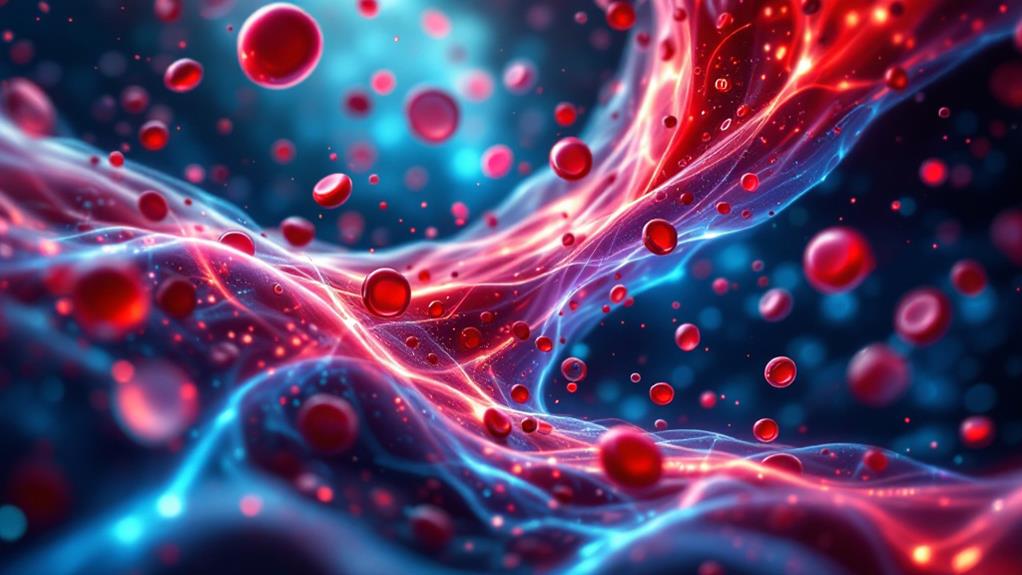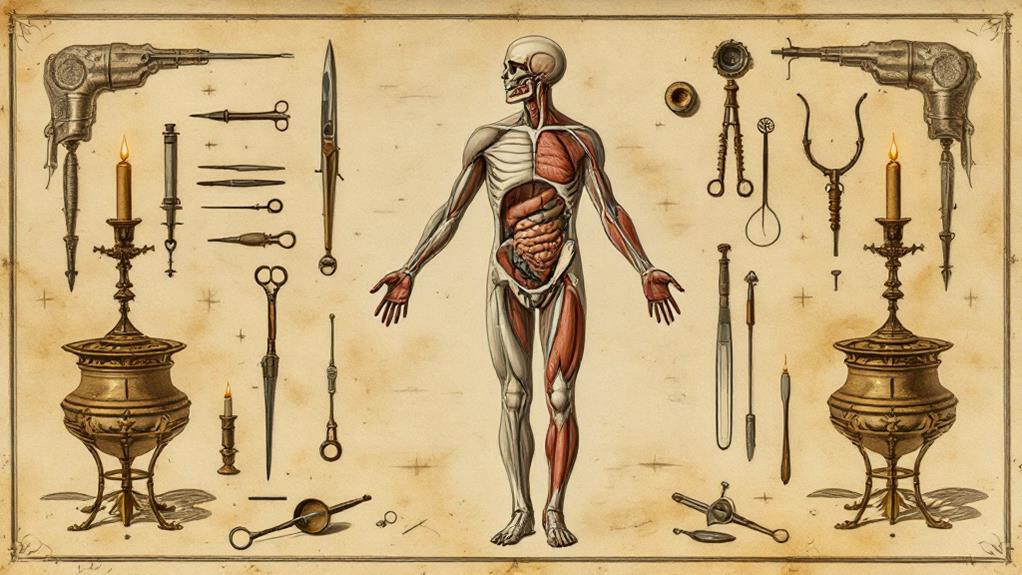What Exactly Are Our Bodies Made Of? The Science of Human Composition
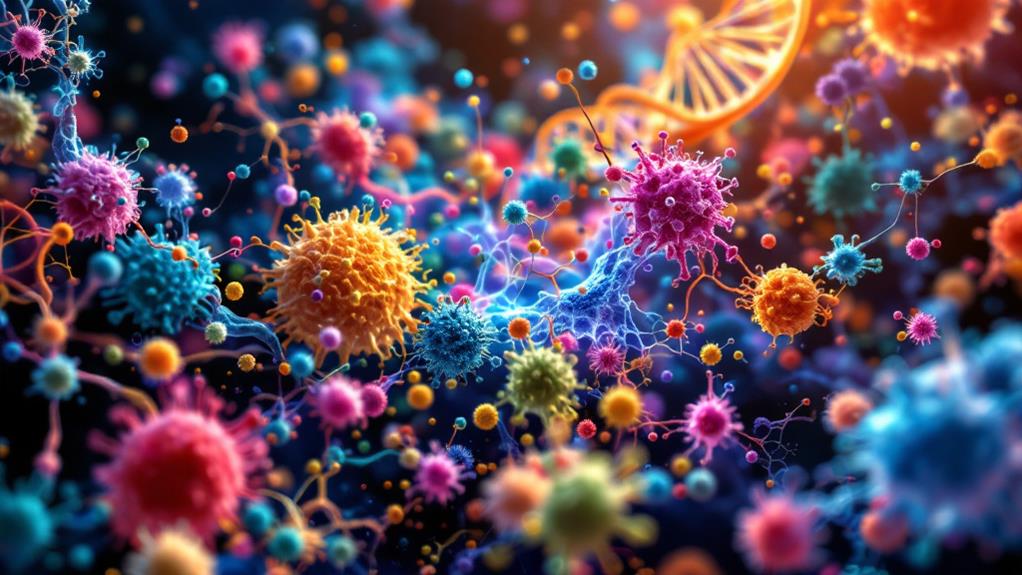
Your body is an intricate blend of elements and compounds vital for life. Carbon, hydrogen, nitrogen, oxygen, phosphorus, and sulfur are key players, forming the backbone of DNA, proteins, and more. Water makes up a significant part, maintaining hydration and facilitating chemical reactions. Fundamental minerals like calcium and iron strengthen bones and aid in oxygen transport. Proteins, lipids, and carbohydrates power functions and energy storage. Within each cell, structures like mitochondria convert nutrients into usable energy. These components interact seamlessly to keep you moving and thriving. To uncover more about this amazing biological system, there's plenty ahead.
Fundamental Elements of Life
When examining life's fundamental elements, you'll uncover that everything boils down to a few significant building blocks. These elements, in their elemental abundance, are responsible for the existence and functioning of living organisms. Carbon, hydrogen, nitrogen, oxygen, phosphorus, and sulfur, often referred to as CHNOPS, are the most important elements underlying the biological significance of life.
Consider carbon, for example—it forms the backbone of organic molecules, allowing for complex structures like DNA and proteins. Without it, life's intricate architecture wouldn't be possible. Oxygen, abundant in Earth's crust and atmosphere, plays a key role in cellular respiration, enabling energy production. Hydrogen, often bonded with oxygen to form water, is fundamental in multiple biochemical reactions. Nitrogen, essential for amino acids and nucleic acids, supports the structure and function of proteins and genetic material.
Phosphorus is critical for energy transfer through ATP, while sulfur is significant in some amino acids and vitamins. Each of these elements has a distinct biological significance, working together harmoniously. Understanding their roles deepens your appreciation for life's complexity and the delicate balance that sustains it. These elements, abundant and fundamental, form the foundation of all living things.
The Role of Water
In the intricate web of life's building blocks, water emerges as a central player, intertwining with the fundamental elements to sustain existence. Water's significance goes beyond mere quenching of thirst. It plays a critical role in maintaining cellular hydration and guaranteeing that cells function at their best. Proper water intake is imperative as it keeps your body's water balance in check, preventing dehydration effects that can disrupt health.
Water functions as a medium for metabolic processes, helping to transport nutrients and oxygen to cells while removing waste. Its distribution throughout your body is indispensable for temperature regulation and joint lubrication. This delicate balance guarantees that every cell, tissue, and organ operates smoothly.
Imagine water's passage through your body:
- A revitalizing sip, cascading down your throat.
- Tiny molecules, weaving through blood vessels.
- Cells, plumping up like tiny water balloons.
- Nutrients hitching a ride on water's flow.
- A cooling mist, keeping your body's temperature in check.
Neglecting adequate water intake can lead to dehydration, affecting everything from cognitive function to physical performance. So, remember, staying hydrated isn't just about drinking water—it's about nurturing every part of you.
Carbon: The Building Block

At the core of life's architecture, carbon stands as a fundamental pillar, forming the backbone of organic molecules vital for life. You might not realize it, but carbon is everywhere in your body, playing a key role in the structure of proteins, carbohydrates, and fats. As you explore organic chemistry, you'll uncover that carbon compounds are remarkably versatile, capable of forming chains and rings that create the diversity of life's molecules.
You'll see carbon cycling through the environment, as it's involved in processes like photosynthesis and respiration, forming a part of what we call the carbon cycle. Carbon dating might not be something you use every day, but it's a technique that relies on carbon's properties to determine the period of ancient organic materials.
In today's world, carbon emissions and carbon footprints are terms you'll hear often, as they relate to the impact human activities have on the planet. Solutions like carbon sequestration aim to capture and store carbon dioxide to combat climate change. Furthermore, carbon allotropes, which include graphite and diamond, showcase carbon's ability to exist in different forms, each with unique properties. Accept carbon's central role in life and science.
Essential Minerals and Trace Elements
Though often overlooked, essential minerals and trace elements are significant for maintaining your body's health and functionality. These tiny components play a major role in several bodily processes. Mineral absorption guarantees that your body utilizes dietary minerals effectively, helping everything from bone strength to nerve function. However, a trace element deficiency can disrupt these processes, leading to health issues. Understanding fundamental mineral sources is crucial to prevent such deficiencies.
Consider these important minerals and trace elements:
- Calcium: Strengthens bones and teeth, aiding in muscle contractions and blood clotting.
- Iron: Essential for producing hemoglobin, which transports oxygen throughout your body.
- Zinc: Supports immune function, wound healing, and DNA synthesis.
- Selenium: Acts as an antioxidant, protecting cells from damage and enhancing metabolism.
- Iodine: Vital for thyroid hormone production, regulating metabolic rate and growth.
Mineral functions are varied, impacting everything from energy production to hormone regulation. By guaranteeing a rich supply of these elements, you support mineral metabolism, which sustains life-sustaining processes. Your diet should include a range of foods rich in these minerals, such as leafy greens, nuts, and seafood, to promote optimal health.
Proteins and Amino Acids
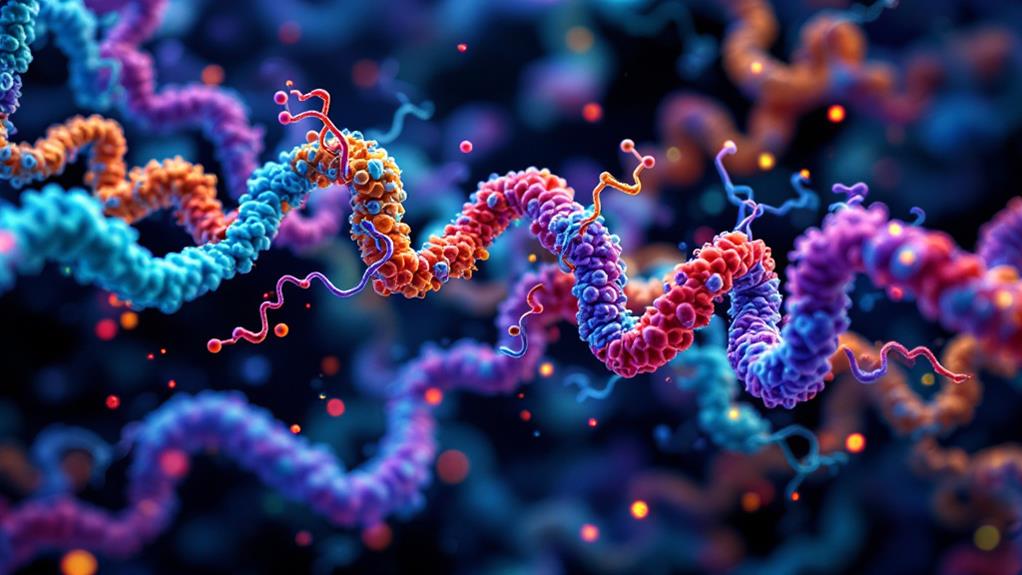
Proteins are the building blocks of life, fundamental for repairing tissues, making enzymes, and supporting thorough bodily functions. They're significant because protein synthesis constantly happens in your body, using amino acids as the key components. These amino acids come together in specific sequences, forming unique protein structures essential for diverse enzymatic functions. Your muscle development heavily depends on these proteins, as they help in repairing and building muscle tissues after exercise.
Understanding amino acid metabolism is significant too. Your body breaks down proteins into amino acids to utilize them efficiently. Amino acid profiles differ based on dietary sources, so consuming a range of foods guarantees you get all the fundamental amino acids your body can't produce. For example, animal products typically offer complete amino acid profiles, whereas some plant-based sources may lack one or more fundamental amino acids.
However, proteins can undergo changes, such as protein denaturation, which can occur due to heat or changes in pH levels. This alters the protein structure and can affect its function. Hence, cooking methods and food preparation can impact how well your body can use the proteins you consume. Understanding these aspects helps you make informed dietary choices.
Lipids and Fatty Acids
Some might overlook the importance of lipids and fatty acids, yet they play a significant role in your body's thorough health. These compounds are more than just sources of energy; they're indispensable for the proper functioning of numerous bodily systems. Lipid metabolism involves the breakdown and synthesis of fatty acids, fundamental for energy production and cellular function. Your body stores lipids for later use, ensuring a reserve of energy when needed.
Dietary fats provide indispensable fatty acids that your body can't produce on its own, supporting crucial processes like:
- Membrane structure: Lipids are foundational in forming cell membranes, maintaining their flexibility and integrity.
- Lipid signaling: They act as messengers, influencing different biological pathways and responses.
- Fatty acid synthesis: This process is integral for producing the lipids necessary for bodily functions.
- Lipid storage: Acts as an energy reservoir, ready to be tapped during increased energy demands.
- Fat soluble vitamins: Lipids aid in the absorption of vitamins A, D, E, and K, which are significant for maintaining health.
Understanding the role of lipids and fatty acids emphasizes their necessity, guiding you to make informed dietary choices that bolster your general well-being.
Carbohydrates and Sugars
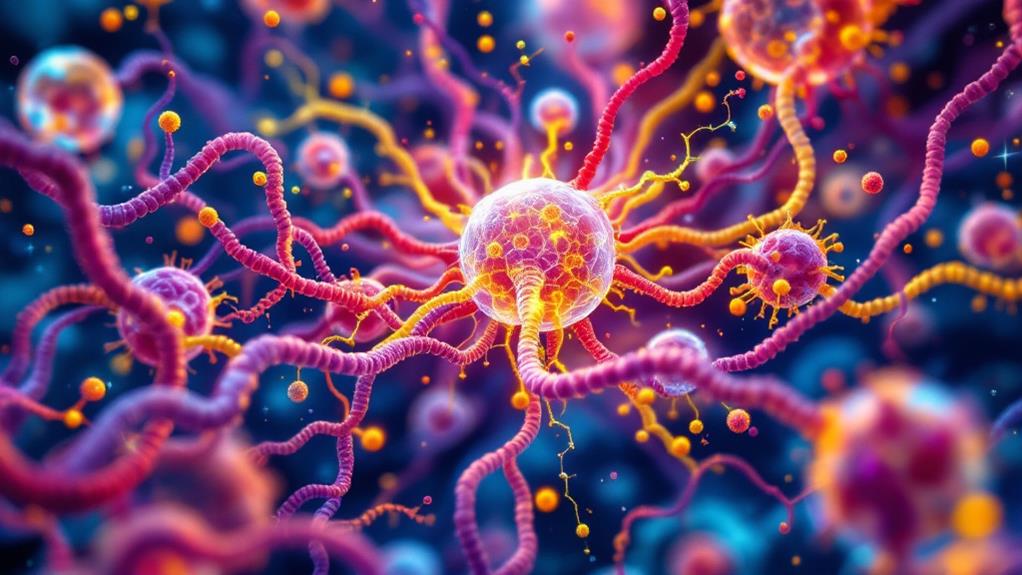
Regarding fueling your body, carbohydrates and sugars play an important role. They're your body's preferred energy source, significant for energy production. When you consume carbs, your body breaks them down into glucose, which powers your cells. This process, known as sugar metabolism, is essential for maintaining energy levels. Carbohydrates serve a range of functions, from providing immediate energy to supporting glycogen storage in your muscles and liver, ensuring you have a reserve for when you need it most.
Dietary sources of carbohydrates include fruits, vegetables, grains, and legumes. These foods also offer different fiber types, which are critical for digestive health and can help regulate glucose levels. Soluble fiber, for instance, slows down sugar absorption, aiding in better glucose regulation.
When you consume carbohydrates, your body's insulin response kicks in. Insulin, a hormone, helps your cells absorb glucose, keeping your blood sugar levels balanced. This regulation is key to preventing spikes and crashes in your energy.
Understanding carbohydrates' roles and choosing the right dietary sources can optimize your energy and health. So, focus on whole foods and balanced intake to support your body's needs effectively.
Cellular Structure and Function
Within the intricate world of cellular biology, understanding cellular structure and function is crucial. Your body is a complex network of diverse cell types, each with specialized roles. These cells rely on cellular energy to perform tasks, powered by organelles like mitochondria. The membrane structure of each cell acts as a gatekeeper, regulating what enters and exits, facilitating cellular communication and signal transduction. This guarantees cells work together harmoniously, maintaining tissue organization within your body.
Imagine your cells as tiny, lively cities:
- Nucleus: The command center, housing DNA and managing cell activities.
- Mitochondria: The power plants, converting nutrients into energy.
- Endoplasmic Reticulum: The production line, synthesizing proteins and lipids.
- Golgi Apparatus: The shipping department, packaging and distributing proteins.
- Cell Membrane: The city wall, controlling interactions with the environment.
Stem cells are unique in this landscape, with the potential to differentiate into numerous cell types, offering remarkable regenerative possibilities. By understanding these elements, you appreciate how your cells maintain balance and vigor. Each component, from organelle function to tissue organization, plays a critical role in the seamless operation of your body's biological systems.
